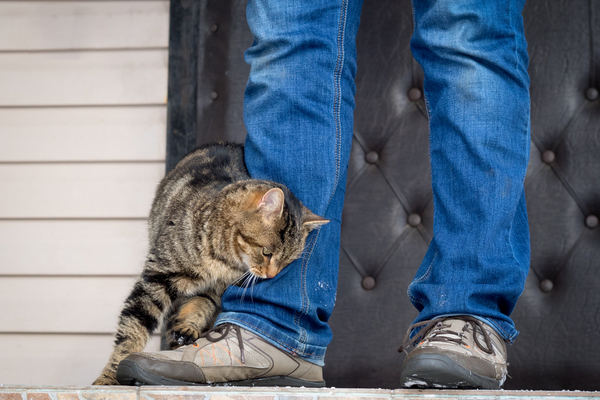People who don’t have, or don’t understand. cats tend to think of them as aloof, extremely independent, not very communicative or affectionate. But those of us who do, well, we know it’s quite the opposite! In fact, at about, oh, 5am, some of us really wish our cats would not be so vocal and needy! Regardless of how you view the situation, the fact is that cats DO communicate, or at least they try. Cats are natural observers, so they actually understand us more than we understand them. If only we humans would / could understand what it is they’re trying to tell us!
Pet Coach has done a very good job of breaking down six different common ways our feline friends communicate with us every single day. Listen Up!
Cat Chirping and Chattering
Chirping is an adorable way a cat lets you know he’s happy. A chirp is usually a very quick, repetitive, “bird-like” sound your kitty makes very quietly. Some cat owners think of it more as a “chatter.” He’ll often make this sound when he’s looking out the window and sees a bird. The sound typically means he’s happy, excited, and focused on a potential hunt. If you’re playing with him, then he might make the chirping sound when “hunting” a feather wand or a mouse toy.
Cat Purring
The majority of the time, purring means your cat is happy. Some cats purr very loudly, and others purr softly, requiring you to listen closely for their little puffs of purr. There are some occasions when purring can mean a cat is distressed, feeling sick, or injured. If she’s hunched close to the ground, eating or drinking less, acting listless or without energy while purring, then this is not a sign she’s happy.
But the majority of the time, a purr is a sign of being at peace. Your cat may purr and knead you when you’re sitting on the couch or laying in bed, and she’s getting ready to cuddle with you. If she likes to be picked up, she may purr whenever you pick her up and hold her close. A cat might even purr if she thinks you are distressed and in need of comforting.
Cat Meowing
A meow is your cat’s most direct way of showing he’s happy. But keep in mind—interpreting meows is actually more complicated than it sounds. The meow can be an announcement to you, a command, a cry for help, or a request.
If he meows gently while watching you at your desk, this may be a happy sound asking you to pet him or step away and play with him. If he meows when you’re in a different room, he may be looking for you. If he meows in front of his food bowl, then he’s likely requesting some kibble.
A meow might also mean he’s worried. He may meow if he can’t find your other pet or if he’s locked in a room and can’t get to his litter box or water bowl.
A high-pitched, short meow is more likely to be a happy greeting or a request to play. A long meow is typically an intense request, like wanting food. Kittens, on the other hand, may have a meow that sounds more like crying. They may do this if lost, for example. An adult cat with a quick, “harsher” meow may be scolding you for something.
When it comes to meows, you need to learn (over time) what the different cadence, pitch, and tone of a meow indicate. It can vary a bit from cat to cat. This may be connected to the fact that adult cats use the meow almost exclusively to communicate with humans, so he may alter his meows based on how you react.
Cat Trills
Very happy cats may also make gentle trilling noises from time to time. These are sing-song sounds that are almost musical in quality. Your cat may trill when you first walk in the door after a long day at work, and she sees you for the first time. Or she may trill while she’s quietly playing with your window shades and looking out the window. A trill is a sound of quiet contentment. It can also sometimes double as an invitation to play.
The trill is a sound your cat’s mom made when getting her kittens to follow her, so your cat may also trill or gently chirp when wanting to show you something.
Cat “Yowls”
Yowling isn’t always a sign of happiness, but for some cats, it can be. A “yowl” is a long, drawn-out meow that’s pretty loud and can be heard across your house. Sometimes a cat that isn’t neutered or spayed may use this as a mating call. Sometimes it can signal a cat is upset, hurt, or angry and is trying to get your attention. Other times it can be a sign of happiness.
Look for other actions to help you determine when a “yowl” is a sign your cat is happy. He may paw at the ground or his scratching post while yowling, or he may run around the house super fast for no apparent reason (an action some owners refer to as “zoomies”). Quick running, scratching on a scratching post, or trying to get you to play are all signs that a “yowl” is a happy sound.
